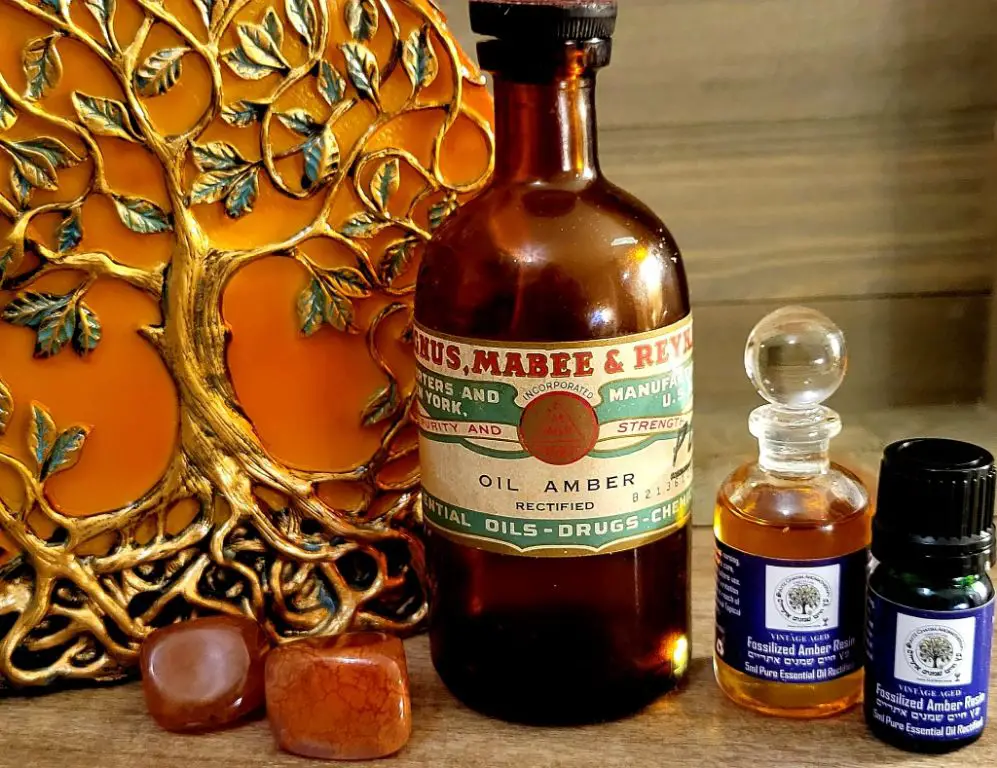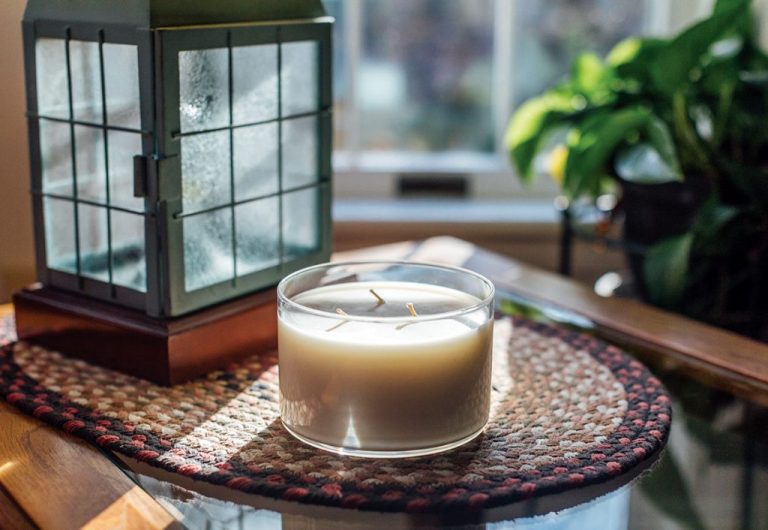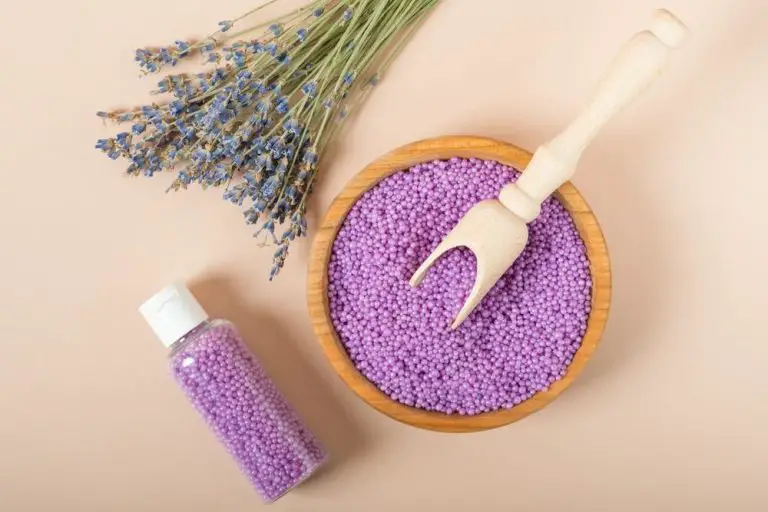Can Amber Oil Be Used As Perfume?
What is Amber Oil?
Amber oil is an aromatic oil that originates from the fossilized resin or sap of ancient conifer trees that grew along coastal regions about 30-50 million years ago [1]. Over many millions of years, the resin hardened and became fossilized under pressure and heat. This fossilized resin is what we know as amber today.
Amber oil is extracted from amber through a process called amber distillation, where amber is heated at very high temperatures, causing the organic compounds present in the amber to evaporate. These vapors are then condensed and collected to produce the final amber oil [2].
The composition of amber oil is complex, containing over 250 identified organic compounds like terpenes, ethers, alcohols, acids and hydrocarbons. This unique chemical profile gives amber oil a sweet, warm, honey-like balsamic aroma, unlike any other essential oil [3].
History of Amber Oil in Perfumery
The origin of amber oil dates back thousands of years in ancient perfumery. Ambergris, a waxy substance produced in the intestines of sperm whales, was highly prized as a perfume fixative and blended with spices, herbs, and woods in ancient Egypt, Rome, and the Middle East (https://perfumesociety.org/ingredients-post/amber/). The rarity and high cost of natural ambergris led perfumers to search for synthetic alternatives.
In the late 19th century, the invention of synthetic vanillin allowed perfumers to create the fantasy note of amber (https://experimentalperfumeclub.com/amber-in-perfume/). Amber accords using labdanum, vanilla, honey, and other aromatics became popular in oriental fragrances. The rise of synthetic chemistry meant perfumers no longer needed expensive natural ingredients like ambergris to formulate amber fragrances.
Today, amber remains an important component in Oriental, woody, and vanilla fragrances. It blends well with notes like bergamot, patchouli, sandalwood, jasmine, rose, and spices. Both synthetic amber accords and natural ingredients like labdanum resin provide fixative, sweetness, and warmth to perfume compositions.
Benefits of Amber Oil as a Perfume Ingredient
Amber oil offers several unique benefits when used as an ingredient in perfumes. One of the most notable is its long-lasting scent. Unlike many essential oils that evaporate quickly when exposed to air, amber oil has a subtle yet persistent fragrance. According to Nemat Perfumes, just a single drop of amber oil can provide a lingering aroma that stays on skin and clothing for hours (source).
Another advantage of amber oil is that it is an all-natural ingredient derived from fossilized tree resin. As consumer demand grows for clean, green beauty products, amber oil offers a sustainable way to create complex, rich scents using a renewable resource from nature. Compared to synthetic perfume additives, amber oil is gentler on the skin and environment (source).
Amber oil also provides unique aromatic qualities that perfume makers highly prize. Described as warm, sweet, slightly woody, and musky, amber acts as a natural fixative that blends beautifully with other notes like florals and spices to form a harmonious, well-rounded fragrance. It adds depth and nuance to perfume compositions while smoothing out any harsh edges (source).
How Amber Oil is Used in Perfumes
Amber oil is very potent, so it is typically used in low concentrations in perfume blends. Usually 1-5% of the total blend is amber oil to allow its scent to come through without overpowering other ingredients (Source). It blends well with floral, oriental, and woody fragrances.
Some complementary essential oils that mix well with amber oil are:
- Sandalwood – adds a creamy, woody base
- Patchouli – deepens the scent and adds an earthy tone
- Bergamot – brightens with fresh citrus notes
- Rose – romantic floral compliment
- Vanilla – sweetens the aroma
Amber oil works nicely in the following fragrance profiles:
- Oriental – blending amber with vanilla, flowers, and woody notes like sandalwood or cedarwood creates a lush, exotic oriental perfume.
- Woody – amber oil enhances woodsy scents like pine, cypress, and vetiver.
- Floral – small amounts of amber oil can provide warmth to floral bouquets, especially rose.
When used appropriately at low concentrations, amber oil intertwines with other scents to produce complex, long-lasting fragrances.
Amber Oil Extraction and Production
Amber oil is extracted through a process called dry distillation, where amber resin is heated to temperatures around 350°C without oxygen to extract the oil (1). This heating process causes the resin to soften and release an oily liquid that is then collected and refined into amber essential oil.
The main locations where amber oil is produced include Russia, Ukraine, Poland, and Lithuania (2). These areas have abundant supplies of Baltic amber, which is considered the highest quality. The amber is mined from fossil deposits and then processed in distillation facilities.

Amber oil production faces some sustainability concerns. Amber is a finite resource and amber mining can disrupt ecosystems. However, amber oil only requires small amounts of resin to produce and recycles mining waste. The distillation process is also relatively eco-friendly compared to other essential oil extraction methods.
Overall, amber oil is a rare and precious oil that is extracted through a specialized heating process. While availability is limited, distillers are finding innovative ways to sustainably produce this unique ingredient.
(1) https://www.edenbotanicals.com/amber-oil-fossilized.html
Amber Oil Perfume Recipes
Amber oil can be used to create a variety of alluring perfume recipes. Here are some sample amber oil perfume recipes to try:
Warm and Cozy Amber
This perfume recipe creates a warm, comforting scent perfect for fall and winter wear (Source):
- 20 ml jojoba oil
- 10 ml almond oil
- 4 drops amber essential oil
- 2 drops orange essential oil
- 2 drops geranium essential oil
Sultry Night Amber
An intoxicating evening scent with amber, jasmine and vanilla (Source):
- 10 ml labdanum resinoid
- 5 ml benzoin resinoid
- 2 ml vanilla absolute
- 1 ml jasmine absolute
- 1 drop ambergris tincture
Feel free to experiment with different carrier oils, absolutes, tinctures and perfume materials to create your own custom amber accord blends.
Storing and Handling Amber Oil
Proper storage is crucial for maintaining the quality and potency of amber oil. Exposure to light, heat, and oxygen can cause amber oil to deteriorate quickly. According to The Flaming Candle, amber oil should be stored in amber glass containers to protect it from light damage.
New Directions Aromatics recommends following the storage guidelines provided by the oil supplier, which are often available on the product label or safety data sheet. General tips include storing amber oil in a cool, dry place away from direct sunlight and avoiding extreme temperatures. Refrigeration between uses can help maintain consistency.
Safety precautions for amber oil include keeping it out of reach of children and avoiding contact with eyes and sensitive skin. Proper hand washing after handling amber oil is also advised. Young Living suggests always securely closing the bottle after use to prevent oxidation.
With proper storage and handling, amber oil’s quality and aroma can be preserved. But over time, some deterioration is inevitable. Pay attention for any changes in color, texture, or scent that may indicate aging of the oil.
Sources:
https://www.theflamingcandle.com/how-should-i-store-fragrance-oil/
https://www.youngliving.com/blog/essential-oil-storage-the-basics/
Drawbacks of Amber Oil as a Perfume
While amber oil has many benefits as a perfume ingredient, there are some potential drawbacks to consider as well.
One major drawback is the high cost. Ambergris, the waxy substance that amber oil is extracted from, is very rare and expensive to obtain. Prices can range from $10,000 to over $100,000 per kilogram depending on quality and market rates. This makes amber oil-based perfumes quite expensive compared to synthetic alternatives.[1]
Another concern is potential allergies or skin irritation. As a natural ingredient, amber oil contains many different compounds that may cause contact dermatitis or reactions in some people. It’s important to do a patch test before applying amber oil perfumes to larger skin areas.[2]
There are also ethical concerns around ambergris sourcing. Ambergris is vomited up by sperm whales and traditionally found washed up on beaches. However, some ambergris on the market may come from illegal whaling or poaching of endangered sperm whales. Conscientious perfumers should ensure their amber oil is sustainably and ethically sourced.[3]
Amber Oil Alternatives
While amber oil has been used in perfumery for centuries, there are other natural and synthetic alternatives that can provide a similar warm, sweet, woody scent:
Other natural perfumery ingredients that can substitute for amber oil include:
- Sandalwood oil – Has a rich, musky aroma similar to amber.
- Benzoin – A balsamic resin that provides a sweet, vanilla-like scent.
- Labdanum – An aromatic gum with woody, amber nuances.
- Cocoa absolute – Offers a deep, sweet chocolate note.
On the synthetic side, aromachemicals that mimic amber notes include:
- Ambroxan – One of the most common amber recreations with a subtle musky character.
- Ethylene brassylate – A musky, powdery amber-nuanced material.
- Phantolide – Provides a clean, woody amber effect.
- Okoumal – Synthesized from natural labdanum oil for an ambergris-like scent.
Both natural and synthetic options allow perfumers to formulate amber accords without relying solely on scarce, expensive amber oil. While these materials may not perfectly duplicate amber’s complexity, blending them creatively can produce very appealing amber aromas.
The Future of Amber Oil Perfumery
The future looks bright for amber oil’s continued use in perfumery. There are several key developments driving innovation in amber oil production and use:
Sustainable production of amber oil is a major focus. New extraction methods are being developed that are less harmful to the environment and amber forests. For example, Future Amber essential oil is sustainably sourced using renewable extraction methods (https://houseofaromatics.com/product/future-amber-essential-oil/).
There is also innovation happening around new perfume compositions using amber oil. Perfumers are experimenting with new blend techniques and accent notes that allow the rich, warm scent of amber to shine. Brands like Amber White are launching new amber-based scents that are enticing and modern (https://www.futurehits3.com/product/amber-white-spray/).
As extraction methods become more efficient and sustainable, we can expect amber oil to retain its prominent role in perfumes. Perfumers will continue innovating with this versatile ingredient to create alluring new scents.





